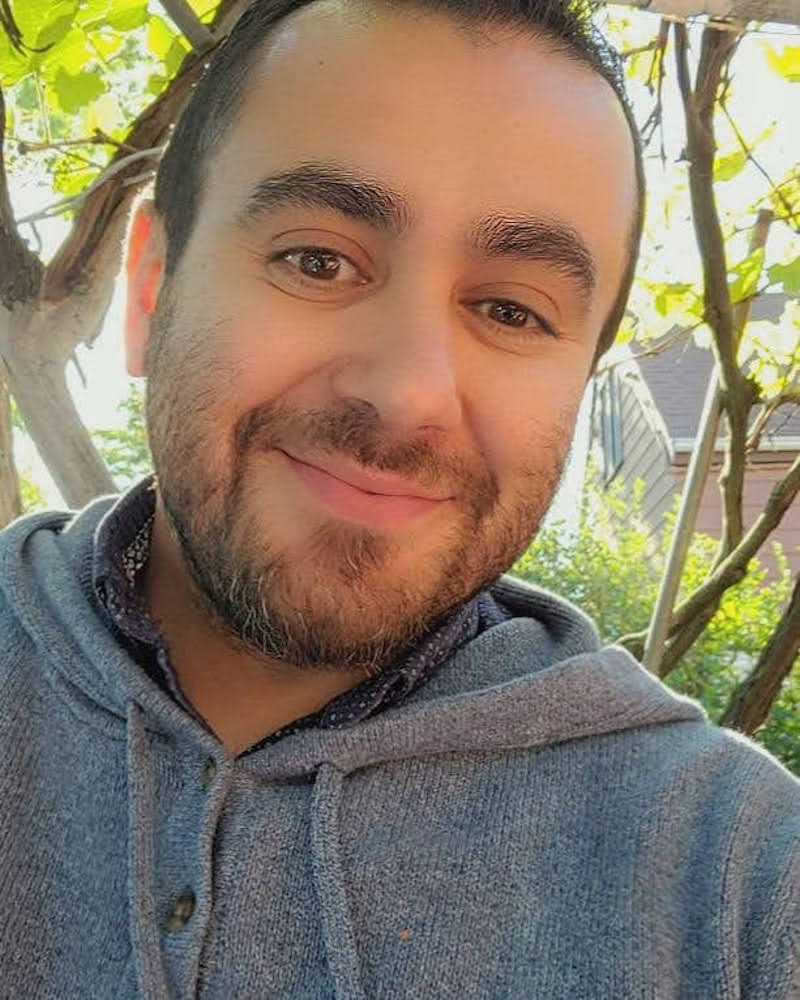Electronic monitoring typically uses GPS tracking systems in devices referred to as ankle bracelets, ankle shackles, or tethers to record the location of their wearers. This includes people awaiting trial, serving probation and parole, and facing immigration proceedings.
In 2020, as the world grappled with the emergence of COVID-19, prisons and jails became hotspots for outbreaks. Looking to slow the spread of the disease, and under the threat of litigation, some jurisdictions began to look for alternatives to incarceration, turning to electronic monitoring as the answer.
Electronic monitoring typically uses GPS tracking systems in devices referred to as ankle bracelets, ankle shackles, or tethers to record the location of their wearers. This includes people awaiting trial, serving probation and parole, and facing immigration proceedings. Jurisdictions use this tracking technology to limit how long a person can stay outside and where they can go. Although COVID-19 created an even larger market for electronic surveillance, the government’s use of electronic monitoring was already on the rise. From 2005 to 2015, the number of active electronic monitors in use rose by 140 percent.
Jurisdictions’ decisions to normalize this technology is troubling for several reasons. Studies show that monitors fail to demonstrably meet their stated goals of ensuring court appearance, protecting public safety, and advancing rehabilitation. Instead, electronic monitoring expands mass incarceration, operating as a form of digital incarceration known as e-carceration, and leading people to physical jails and prisons for minor technical violations, charging malfunctions, and false alarms.
Electronic monitoring also exacerbates systemic inequities along lines of race, class, and disability. For example, in Detroit, Black people are two times more likely than white people to be electronically monitored. Depending on the jurisdiction, fees to wear these monitors range from $3-$35 a day, often in addition to initial setup charges, which can range from $100 to $200. The expensive fees compound and can amount to hundreds of dollars per month, overburdening households already dealing with the return of loved ones from incarceration. Furthermore, research shows that the stigma, social isolation, and stress that results from being monitored exacerbates depression and anxiety for wearers.
On September 29, the ACLU released Rethinking Electronic Monitoring: A Harm Reduction Guide, which calls on jurisdictions to replace electronic monitoring with less restrictive and more effective measures, such as court reminders and transportation assistance. The report also outlines ways jurisdictions can mitigate the harms of monitoring in accordance with due process and fairness principles. We urge jurisdictions to:
- Strictly limit the use of electronic monitoring
- Provide adequate notice and explanation of monitoring requirements
- Standardize appeals, review, and revocation proceedings
- Ensure access to counsel
- Eliminate discrimination based on wealth and housing status
- Reasonably accommodate people with disabilities
- Develop reasonable movement and expansion standards
- Provide credit for time served on electronic monitoring
- Ensure privacy and data protection
- Ensure adequate data collection and transparency
You can read the full report here. Defense attorneys can check out our resource with guidance on challenging pretrial electronic monitoring here. Below, three people share their stories of enduring electronic monitoring.

Credit: Michael Tafolla
Michael Tafolla
Michael Tafolla is a 42-year-old man from Chicago, Illinois. After serving 20 years in prison, he was released with an electronic monitor as a condition of mandatory supervised release.
When I was first released on an ankle monitor in July of 2018, I was approved for three days of movement, four hours each day, Monday, Wednesday, and Friday. After a while, I got an internship at my university and a full-time job at a temp agency. But it was incredibly difficult to get my approved movement hours adjusted. I called my parole officer and they told me that I had to pick between the internship or the job with the temp agency. They said I was doing too much. I was having panic attacks because of this. I am trying to go to school. I am trying to work. I don’t understand the problem. You’re telling me I’m doing too much? I’m doing too much of what I’m supposed to do? You get out and you think you’re free and you’re going to be able to enjoy life, but now doing the most basic, necessary things like working and school become the most complicated.
You get out and you think you’re free and you’re going to be able to enjoy life, but now doing the most basic, necessary things like working and school become the most complicated.
I eventually got my movement hours expanded, but between the internship, school, and the job at the temp agency, I didn’t have time to do anything else. I couldn’t buy soap, I couldn’t buy clothes. I just did 20 years in prison, but I couldn’t go visit my parents. They had physical limitations and lived far away, it was too hard for them to come and see me. Every time I asked for additional movement, the parole officer denied me. Their point was that I shouldn’t be out of the house that much, no matter what I was doing. I was like, “why am I still being punished?”
With this lack of movement, you are putting a person in a worse situation, unintentionally. In my experience, in this county, it is near impossible to get movement time expanded for anything, even going to the hospital. I never want to say that being locked up is better than being at home, but you’re not letting people work or do anything. That’s why a lot of people cut off their monitor — because they can’t take it anymore. It just becomes too hard.

Credit: Shannan Davis
Shannan Davis
Shannan Davis is a 43-year-old Native American woman who is a member of Chippewa Sioux Tribe in Michigan. She was temporarily released from jail to a treatment center with the condition that she wear an ankle monitor.
Being on the monitor has been very stressful. It’s a long cord that wraps around my leg and twists up in knots around me. The sheriff’s department had to come the other day and fix the bracelet because it was so loose. Now it’s on too tight. When I walk, my muscles contract and it almost feels like it’s going to break apart. I’m scared to ask them to loosen it again because every time I call, they give me an attitude. They have their comments about “You shouldn’t do drugs and you shouldn’t break the law.” I get it. But if you can’t understand somebody else’s way of life, then you shouldn’t be doing the job you’re doing. These people are supposed to protect and serve and they’re just hateful.
At the recovery house, I’m not allowed to leave because of a court order. I can’t go on group outings with the other girls staying here. I’m pretty much locked down in this house.
With electronic monitoring, they make it very hard for us to be where we need to be, to get to get the tools to live back in society.
I’m not allowed to go to the store with the rest of the house. I’m not allowed to take a walk down the road for exercise. There are always staff members with the girls so we’re not unsupervised but, because of the way my bond is worded, I am not allowed to participate.
I also can’t pay for the monitor. It’s $105 a week to be on this thing, and my mom is paying for it. With electronic monitoring, they make it very hard for us to be where we need to be, to get to get the tools to live back in society. Like the other day when I got back from the doctor, all three lights on the monitor were going off and it did that for two to three hours. I couldn’t get a hold of anybody. The thing just goes off all day. It’s stressful because I think they’re going to come and pick me up and arrest me.
Matthew Brown
Matthew Brown is 34 years old and lives in Maricopa County, Arizona. He was placed on an ankle monitor pending trial. Because of court delays, Matthew has been on an ankle monitor for 3 years with no opportunity to have the monitor removed.
Since being on electronic monitoring, I have lost touch with my family. My dad and my grandparents live in Mexico. Most of our family events are in Mexico, but I can’t go. I’ve missed my sister’s wedding, my nephews’ birthdays. I don’t see my dad or grandparents unless they come up to Arizona. I try to FaceTime, but they aren’t good with technology. It has really disconnected me.
The more disconnected I get from people, the harder it is on me mentally; the worse I feel about myself. When you’re on electronic monitoring they say you are free, but you’re really jailed. It’s around 100 degrees six months out of the year in Arizona.
The more disconnected I get from people, the harder it is on me mentally; the worse I feel about myself.
I can’t wear pants, so everyone sees the bracelet. Taking my nephew to a bounce house or going to the gym I am automatically judged. Moms pull kids away. You just feel bad.
I am worried about the money too. Until my case is resolved I don’t have to pay for the monitor, but I am afraid of the eventual price. Each monitor unit costs $1,740. I’ve probably water damaged a dozen or more because of my job as a boat captain. It wasn’t me having fun, it was me doing my work. There is a daily charge too, but I do not know how much it is. The case officer said, “You’re coming up on 3 years, that’s going to be really expensive.” Even if it’s $10 a day I would be paying $10k after 3 years. I don’t know when they will remove the monitor. Every day is more I have to pay. They can force a guilty plea out of someone because you owe so much money.
If I did not have the financial means and support, I would have already pleaded guilty. I can only imagine how many people do that. People lose their jobs because of electronic monitoring and they can’t pay for their house, or family, or kids. It’s a domino effect.
